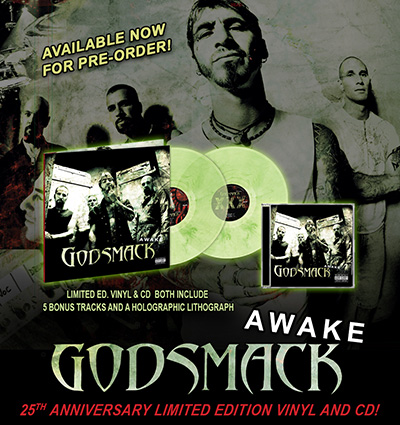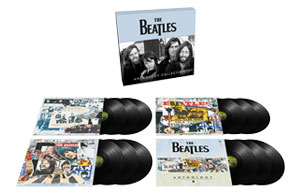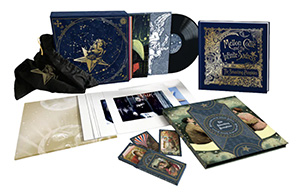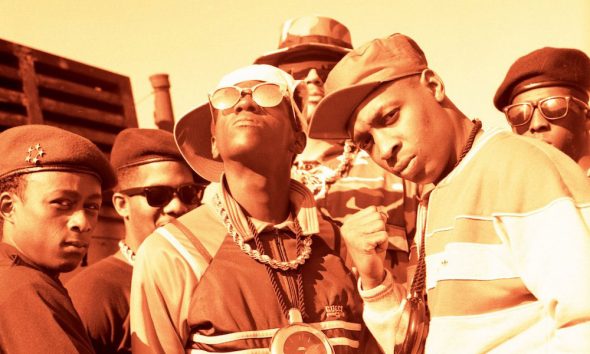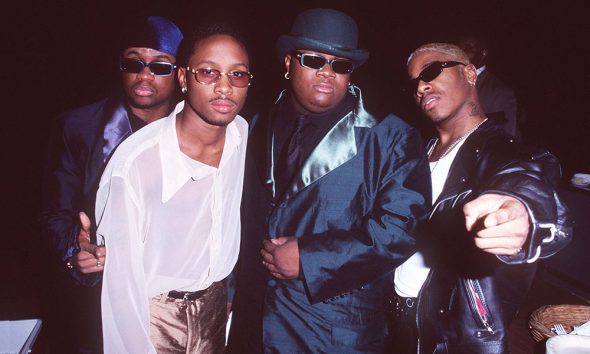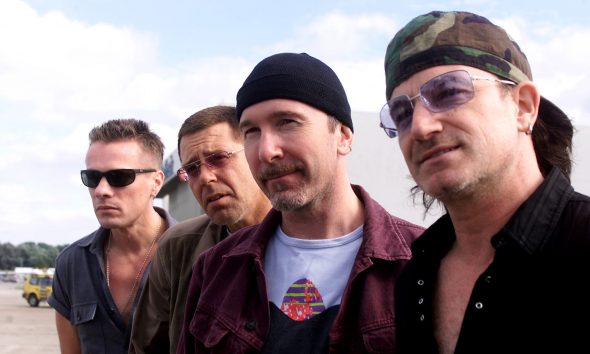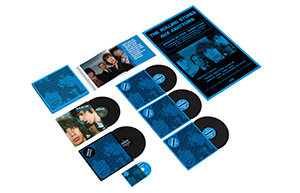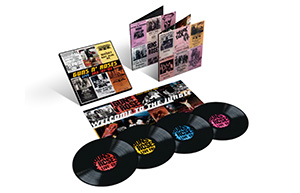Ozzy Osbourne, Co-Founder of Black Sabbath, Has Passed Away
Throughout Black Sabbath and much of his solo career, Osbourne was both demonized and deified.
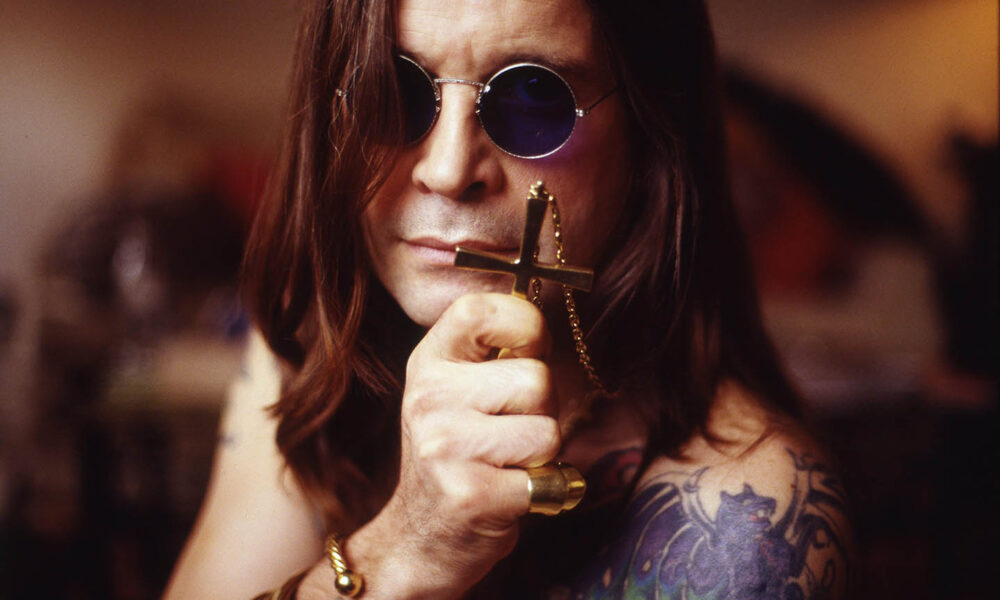
Ozzy Osbourne, the co-founder of iconic metal group Black Sabbath, has passed away.
Osbourne was a pioneer of the aggressive music style that morphed into heavy metal with the release of Black Sabbath’s eponymous album in 1970 – though the genre title wasn’t embraced by Black Sabbath and other bands until almost a decade later. Even so, Black Sabbath’s first six albums are still hallmarks of the style. As a solo artist, Osbourne was equally successful, recording three hit albums in a row that included hard rock and metal classics such as “Crazy Train,” “Flying High Again,” “Mr. Crowley,” and “Bark at The Moon,” In later years, Osbourne enjoyed additional acclaim with more melodic fare like “Perry Mason,” “Mama, I’m Coming Home” and “No More Tears.”
His accomplishments in entertainment tower above those of other metal icons: Millions of albums sold, top-grossing tours, three Grammy Awards (two with Black Sabbath, one solo), an Emmy (for the hit MTV reality show The Osbournes), a spot in the Rock and Roll Hall of Fame, a touring metal festival named after him (Ozzfest). Yet while Osbourne was a gifted songwriter, commanding performer, and widely emulated lyricist, he was almost as well known for being a loose cannon whose outrageous antics over the decades earned him the nickname the Prince of Darkness.
Throughout Black Sabbath and much of his solo career, Osbourne was both demonized and deified for his addictions to drugs and alcohol and his wild behavior, which led to missed tours, canceled shows, and multiple trips to rehab.
Like members of Motley Crue, Metallica, and Van Halen (to name a few), Osbourne’s escapades included damaging and destroying hotel rooms, cars, and other property, but he was even more unhinged than most of his rock peers. In 1979, Osbourne was kicked out of the highly volatile Black Sabbath for being too unpredictable. With the help of his manager Don Arden’s daughter, Sharon Arden, Osbourne cleaned up and returned to the stage. (Sharon and Ozzy would later wed.)
As a solo artist, he was musically reborn. In addition to towering in popularity over the band that fired him, Osbourne scouted and groomed a series of guitar heroes, including Randy Rhoads, Jake E. Lee, Brad Gillis, Zakk Wylde, and Gus G.
Osbourne’s career resurrection didn’t calm his wildman persona, however. It intensified it. The singer made headlines for biting the head off of a dove at a record signing party for his first solo album, The Blizzard of Ozz; decapitating a bat with his teeth while touring for his second album, Diary of a Madman; and getting arrested for urinating on the Alamo in San Antonio while wearing one of his wife’s dresses. He was subsequently banned from playing the city until 1992, when he apologized and donated $10,000 to the national monument grounds. He was also institutionalized after trying to strangle his wife and manager, Sharon Osbourne, during an alcohol blackout.
“I was born with the attitude of all or nothing. For me, one is too many, and ten is not enough,” Osbourne told Louder Than Hell: The Definitive Oral History of Metal. “I’ve done a lot of stupid things in my life and there’s one thing I’ve learned. A stupid thing has and always will have a stupid result. You cannot do a stupid thing and expect a different result. Sometimes I’ve jumped and I’ve gone, ‘That is stupid,’ and it’s too late. I’m already falling and I’ve got to crash and burn.”
Early years
Osbourne was born in Marston Green Maternity Hospital on December 3, 1948. One of John Thomas Osbourne and Lilian Osbourne’s six children, Ozzy grew up poor in a small two-bedroom home in post-war-shattered Birmingham. He attended primary school with future Black Sabbath guitarist Tony Iommi, who was a year older than Ozzy and reportedly intimidated his younger classmate. It would be close to another decade before the two made a musical connection. In school, Ozzy was teased for wearing unfashionable hand-me-downs and having trouble learning due to his undiagnosed dyslexia. Though he never excelled academically, he enjoyed acting in and watching musical theater. But it was hearing the Beatles’ “She Loves You” on the radio that motivated him to want to be a professional musician.
Osbourne dropped out of high school when he was 15 and worked various blue-collar jobs, including in construction, plumbing, toolmaking, and at a slaughterhouse, where he killed cattle. He co-formed his first band Rare Breed with bassist Geezer Butler in 1967. When the band broke up, Osbourne placed a flyer in the local music shop: “Ozzy Zig requires gig.” Iommi, who had played with drummer Bill Ward in the bands The Rest and Mythology, responded to the ad.
Black Sabbath
After a quick jam session, Osbourne, Butler, Iommi, and Ward formed The Polka Tulk Blues Band with a slide guitarist and a saxophone player. Opting for a leaner lineup and a less disjointed sound, they broke up the band and reformed as the quartet Earth. While they were originally a progressive blues band, one of their songs, “Wicked World,” sounded more gloomy and ominous than their other tunes. From that point on, Earth decided to explore a heavier style of rock rooted in plodding beats, overdriven power chord guitar riffs, minor-key hooks, and Ozzy’s sneering nasal melodies. Earth gigged regularly, but when a booking agent confused them with another band of the same name – much to the chagrin of a club full of well-dressed patrons looking to let off steam and dance – Osbourne and Co. changed their name to Black Sabbath, the title of a 1963 Mario Bava horror movie starring Boris Karloff.
Black Sabbath’s self-titled 1970 album was recorded in two days and is still widely recognized as a groundbreaking heavy metal album. Black Sabbath, which began with the sound of rain and a tolling bell, was a haunted fortress of sound imbued with crunching, distorted riffs, lumbering beats, occult-based lyrics, and flattened fifths, dissonant, unnatural-sounding notes that gave the music a distinctly sinister feel.
Capitalizing on their rapidly growing popularity, Black Sabbath released their second album, Paranoid, in September of the same year. The album combined material they composed on the road with passages they came up with in the studio. Although quickly assembled, it yielded some of the band’s biggest hits, including the title track, “Iron Man,” and “War Pigs.”
In 1971, Osbourne met Thelma Riley at a nightclub in Birmingham, and the two quickly got married. The couple had two children, Jessica and Louis (who appeared in the artwork of Ozzy’s second solo album Diary of a Madman), but the marriage didn’t last due to Ozzy’s full-time commitment to Black Sabbath. Much of his income subsequently went to child support. While touring America, where Black Sabbath’s debut reached number 12, the members were exposed to the excesses and indulgences of the rock world – cocaine, LSD, pills, groupies, and oceans of alcohol – and for years, they consumed like gluttons, especially Osbourne. Yet for about five years, vice didn’t slow the barrelling machine, and Black Sabbath continued to evolve as songwriters and players, churning out four more metal classics years while maintaining heavy tour schedules.
However, by 1976, it became impossible for the band to keep up the hectic pace and by the time they released their seventh and widely panned album Technical Ecstasy, it was clear Black Sabbath were unfocused and unhinged. Having been fleeced by their former management, and finding themselves in an era typified by commercial music and punk rock, Black Sabbath took a stab at mainstream songwriting, fueling their compositions with jaunty keyboards, power-rock riffs, and softer melodic tones that didn’t connect with their fans.
The ironically-titled Never Say Die! was the end of the line for Ozzy-Sabbath for many years. When they wrote the 1978 album, the band was so disoriented, they were unable to tell if what they were doing was any good. So they threw some bluesy licks and jazzy frills into a batch of workmanlike songs and called it a day. Never Say Die! was neither memorable nor compelling and was quickly forgotten. After a disastrous tour, Black Sabbath fired Osbourne, citing his unwillingness to show up to practice and his inability to perform due to binges that left him nearly incoherent. Black Sabbath replaced Osbourne with former Rainbow vocalist Ronnie James Dio, who would enter and exit the Sabbath fold several times over the next 30 years.
Solo years
Recognizing that Osbourne still had public appeal, songwriting chops, and showmanship skills, Sharon Arden, daughter of Sabbath manager Don Arden, befriended and supported Ozzy. She was especially touched by his self-deprecating sense of humor, and encouraged him to taper his excesses and return to the stage. He took her advice and she worked to put together an all-star lineup. Soon after, Osborne entered the studio with guitar virtuoso Randy Rhoads (ex-Quiet Riot) and recorded his debut solo album, The Blizzard of Ozz, which was released in the U.S. in March 1981 (six months after its UK release). The album included the hits “Crazy Train,” “Mr. Crowley,” “I Don’t Know,” and “Suicide Solution,” and peaked at #21 on the Billboard charts. A staple of metal through the decades, the album eventually sold more than five million copies in the U.S.
With fame, came controversy. After reluctantly agreeing to attend a promotional event at his new record label, Jet, Osbourne reinforced his wildman reputation. “I entered the building, and I was very drunk, very stoned,” he told Louder Than Hell. “Sharon said to me there was this guy in the room that would throw these two fucking doves up in the air as a peace offering. I threw one in the air and bit the other one’s head off and threw it on the table. And they just fucking freaked. And, before the day was out, it was all over the press, flying all over the world and I was the bad man and the asshole of the fucking year. They banned us from the building – from my own record company.”
Executives at his new label were afraid to be anywhere near Ozzy, but they realized he was an untapped goldmine – a performer with a distinct voice, tremendous stage presence, and a gift for melodies. In November 1981, Jet released Ozzy’s second album Diary of a Madman, which reached #16 on the Billboard 200 and included the hits “Flying High Again,” “Over the Mountain,” and “Tonight.” While touring for the album, Osbourne garnered more headlines after the bat incident, which took place on January 20, 1982, in Des Moines, Iowa.
“When we were on tour, people would bring meat and fucking bits of shit and throw it onstage,” he told Rolling Stone. “As the tour progressed, it jumped from meat to dead animals and cats. And on top of it, I had these Halloween rubber bat things on the stage. Unbeknownst to me, I picked [the bat] up and I put it in my mouth and bit down on the fucking thing and it crunched. It turned out to be a real bat. I had to go to the fucking hospital and get precautionary rabies shots. If you’re gonna do something as stupid as me, be warned that these rabies shots are not fucking worth it. It fucking hurts like a son of a bitch. It feels like someone’s injected 60 fucking golf balls in your ass. It was nothing short of agony. I made the front page everywhere and I couldn’t even get out of the fucking bed to read it.”
The cringe-inducing episode paled in comparison to the life-changing tragedy that derailed Osbourne two months later. The band was driving from Knoxville, Tennessee to Orlando, Florida in the middle of the night when the bus driver pulled over near Leesburg, Florida. The bus driver, Andrew Aycock, was also a pilot, and was looking to fly the band in his plane at a nearby airfield. Osbourne and Arden were deep in slumber when Ozzy’s tour manager and one other passenger took a flight with the pilot and landed safely. Then, Rhoads and Osbourne’s seamstress and makeup designer, Rachael Youngblood, hopped onboard with Aycock. The pilot circled the bus three times but on the fourth pass, the left wing of the plane clipped the roof of the bus and the plane careened into the garage of a house, killing everyone on board. Osbourne was devasted and sunk into a depression. The tour was postponed while Osbourne mourned and management searched for a replacement for Rhoads, who is still regarded as one of the greatest neo-classical metal guitarists of all time.
“Randy would have gone on to do such great things,” Osbourne told Penthouse. “Sometimes I wonder why I didn’t go on the plane, too. Had I been awake, I definitely would have been there.”
Osbourne and his bandmates returned to the road for a handful of shows with bluesy ex-Gillan guitarist Bernie Tormé, but he didn’t gel musically, so Night Ranger guitarist Brad Gillis filled in for the rest of the tour, which yielded the 1982 live album Speak of the Devil, which featured all Sabbath covers and was spitefully released the same year as Black Sabbath’s live album with Dio, Live Evil.
Ozzy and Sharon married on July 4, 1982, in Maui, Hawaii. He chose the date in part so he would never forget their anniversary. For a long while, their relationship was tempestuous – filled with equal parts chaos and affection. “Our fights are legendary to people in this business,” she told Penthouse. “We’d hurt each other a lot. We had a great fight once at the Hard Rock Cafe in New York. We beat the shit out of each other. And then the next day we’d be loving and kissing. I could give him as good as he gave me. I was never one of those women who go, ‘Oh, god, he slapped me, I’m going to call a policeman.’ If somebody slapped me, I’d slap them back, but three times. And if Ozzy would throw something at me, then I would destroy the fucking room.”
Upon his return to the studio, Osbourne recruited guitar whizz Jake E. Lee, who played on 1983’s Bark at the Moon and 1985’s The Ultimate Sin, both of which fared well. Unhappy with his financial arrangement with the band, Lee quit and the Osbournes recruited young and gifted guitarist and songwriter Zakk Wylde (Black Label Society), who became Osbourne’s go-to guy, having played four multi-year stints with Ozzy between hiatuses, Black Sabbath reunions, and Black Label Society albums.
While Osbourne’s love affair with drugs and alcohol lasted on and off for decades, he was generally a functioning abuser, able to write, tour, and record with some enabling from his handlers and bandmates and occasional return trips to rehab. Offstage, he was an impish troublemaker and referred to himself as more Dennis the Menace than Beelzebub. But on September 2, 1989, after touring for the tremendously successful No Rest for the Wicked, Ozzy was drunk in bed in his underpants when he felt the urge to go downstairs and strangle Sharon, which resulted in a brief spell in jail, then mandatory rehab.
“He was on an unbelievable roll of drug-taking, drinking, making drug concoctions that were hidden all over the house,” she told Penthouse. “All these different drugs. And he would go through these times where he would make concoctions of everything and take it with the booze, and he was on an outrageous roll for a week. On the seventh day, he tried to kill me. He tried to strangle me, but seriously. I got to the panic button for the alarm, and the alarm system went off, and the cops came within a few minutes, and that was it.”
“When you drink, that’s when you become Dr. Jekyll and Mr. Hyde because I honestly didn’t know [what I was doing], and that was the biggest fear I had because I had become a blackout drinker,” he told the magazine during one of his clean and sober periods. “It was horrendous. I was just waking up and thinking, ‘What the fuck have I done now?’ You wake up covered in blood and you don’t know where the blood’s come from?”
The 1990s
For his album No More Tears, Ozzy sought writing help from Wylde and Lemmy Kilmister (who penned four songs). The album came out in September 1991, the same year Nirvana turned the rock world upside-down with Nevermind. Despite the public’s waning interest in metal, No More Tears sold four million copies (second only to the five million-seller Blizzard of Ozz) and featured the singles “No More Tears” and “Mama I’m Coming Home.” Exhausted from decades of touring, Osbourne announced the No More Tours tour, which was meant to be his farewell from the road. Unable to acclimate to a stay-at-home lifestyle, Osbourne returned to the studio a couple years later and release Ozzmosis in 1995, which was supported by the Retirement Sucks tour.
Viewing an open window to capitalize on the success of major package tours including Lollapalooza, Sharon and Ozzy’s son Jack Osbourne assembled Ozzfest, which launched in 1996 with a two-city event headlined by Osbourne and featuring Slayer, Danzig, Sepultura, and others. At the end of 1997, Osbourne reunited with Black Sabbath for two hometown shows at the Birmingham NEC Arena. The gigs were recorded and released in 1998 as Reunion along with two new studio tracks, “Psycho Man” and “Selling My Soul,” written by Osbourne and Iommi.
The next year, Ozzfest expanded to 21 U.S dates and featured sets by the reunited Black Sabbath, Ozzy Osbourne solo, Pantera, Type O Negative and many more. Black Sabbath and Osbourne alternated festival years and Black Sabbath played a solo tour after Ozzfest in 1999. The band’s last year on the festival tour was in 2001, however, whether Sabbath or even Ozzy was on the bill, Ozzfest remained a multi-city financial success until 2006 and expanded throughout North America, Europe, And the Far East.
The 2000s
Ozzy and Sabbath split up again in 2006 and Ozzy worked on his solo album Black Rain. Around the same time, Black Sabbath sans Ozzy reunited with vocalist Ronnie James Dio, who played on three successful post-Ozzy Sabbath albums. The band called itself Heaven and Hell after their 1980 album of the same name. In addition to touring, Heaven and Hell released the album The Devil You Know in 2009 and then hit the road hard. However, Dio was diagnosed with aggressive stomach cancer at the end of 2009 and died in 2010. The surviving band members were devastated and mourned for their friend and vocalist. Then, they started speaking with Ozzy and Sharon again and agreed to reconnect with producer Rick Rubin, with whom they had made some unfinished demos in 2001, shortly before Ozzy split to finish vocals for his solo album Down to Earth.
The Osbourne songwriting hit machine slowed down in the aughts; he released three solo albums between 2001 and 2010, but that didn’t signal any lack of public exposure. Indeed, Osbourne was everywhere in 2002 when his warts-and-all reality show, The Osbournes, debuted on MTV and everyone in his family immediately became a household name. The Emmy Award-winning program followed the foul-mouthed, argumentative, and offbeat family through their daily lives and was embraced by critics, fans, and curiosity-seekers alike. Success was followed by misfortune; Sharon was diagnosed with colorectal cancer, which spread, necessitating chemotherapy. She suffered a long illness, but survived, then opted for a double mastectomy. And Osbourne’s son Jack, sideswiped by sudden notoriety and anxiety about Sharon’s illness, became addicted to OxyContin.
Then, in 2003, though clean and sober, Osbourne suffered a life-threatening injury while riding an ATV through uneven terrain on his 150-acre estate in Buckinghamshire. He hit a bump and the vehicle started to flip forward. As he told Dianne Sawyer, “I got on the bike and the last thing I remember, something in my mind went, ‘bad move. Something really bad is gonna happen.’ And I go, ‘Oohuh-oh.’”
Osbourne was thrown over the handlebars and landed hard on the ground. The 600-pound ATV flipped on top of him, and the two continued to roll; Ozzy wasn’t wearing a helmet. A bodyguard was able to pry Osbourne from under the vehicle and performed mouth-to-mouth resuscitation twice before Osbourne started breathing again. Osbourne was rushed to the hospital where he was diagnosed with fractured neck vertebrae, eight rib fractures, a partially collapsed lung, and a shattered left collarbone. He also damaged a blood vessel, and doctors had to perform emergency surgery to restore blood flow. And, they inserted pins into his back and neck to stabilize the bones and enable Osbourne to move around. Much of the ordeal, as well as Sharon’s chemo sessions, were captured by MTV camera crews and were broadcast on The Osbournes.
The later years
In 2006, after 11 years of eligibility, Black Sabbath were finally inducted into the Rock and Roll Hall of Fame (Ozzy has yet to be nominated for the Hall of Fame as a solo artist). In 2010, Ozzy released his New York Times bestselling autobiography I Am Ozzy, which he followed a year later with Trust Me, I’m Dr. Ozzy: Advice From Rock’s Ultimate Survivor.
Then in 2012, the original members of Black Sabbath – Osbourne, Iommi, Butler, and Ward – reconvened with Rubin to write and record their final album, the highly praised 13, which came out in 2013 and recaptured the band’s doom-laden glory years. In 2012, Iommi was diagnosed with lymphoma but continued with plans to tour with Black Sabbath despite needing chemotherapy treatments between legs of the top-grossing tour. The shows ran from 2012 to 2014, and Iommi, though ill, toughed it out. He received additional treatment for his illness and announced he was in full remission in 2016, just in time for one last swing around the world with his legendary band.
Black Sabbath’s farewell tour, The End, ran from January 20, 2016, to February 4, 2017. For the tour, the band released a titular EP featuring four unreleased songs from the 13 sessions and four live tracks recorded between 2013 and 2014. It was the final official Black Sabbath offering to feature original studio material with Osbourne.
The tour came to an end in Birmingham, England, and was commemorated with the concert film, Black Sabbath: The End of the End, which came out in September. Two months later, Black Sabbath released the final concert, The End: Live in Birmingham.
Having completed his work with Black Sabbath, Ozzy returned to his solo career. He booked the tongue-in-cheek tour No More Tours II, but had to cancel shows in the U.S. and Europe and delay studio sessions for his next album after he suffered the flu and bronchitis and was admitted to intensive care. Plans for future touring and recording were further jeopardized when Osbourne suffered a severe fall in his house in early 2019, dislodging the pins that had been inserted in his neck and back when he flipped his ATV in 2003. “I went to the bathroom in the night, lost my balance, and landed flat on my face,” he told The Daily Mail.
The accident was one of the first indications that Osbourne was suffering from Parkin 2, a rare form of Parkinson’s Disease. Osbourne revealed the diagnosis in 2020 to Robin Roberts on Good Morning America. “I got a numbness down [my] arm… My legs keep going cold,” he said.
Determined to keep working, Ozzy finished Ordinary Man, which came out in 2020. The album featured an all-star lineup, including Slash, Tom Morello, Chad Smith, Duff McKagan, Charlie Puth, and Kelly Osbourne. In addition, Post Malone, Travis Scott, and Elton John guested on the record. Despite the celebration, Osbourne’s health continued to decline.
In April 2022, Sharon announced that Osbourne had COVID. Then, came an even more disconcerting revelation. On the June 8 episode of her UK TV program The Talk, Sharon cryptically told the audience that Osbourne “has a very major operation on Monday, [June 13], and I have to be there. It’s really going to determine the rest of his life.”
During a lengthy surgery, doctors removed and realigned the pins that were broken during Osbourne’s earlier fall. The procedure wasn’t a complete surprise. Ozzy had previously told the magazine Classic Rock that he needed an operation because he was too weak to perform. “I’m just waiting on some more surgery on my neck,” he said. “I can’t walk properly these days. I have physical therapy every morning. I am somewhat better, but nowhere near as much as I want to be to go back on the road. I don’t plan on going anywhere, but my time’s going to come.” Osbourne held on for a few years after the procedure, even headlining a memorable final show called Back to the Beginning on July 5, 2025. It will stand as a fitting goodbye to one of the legendary metal musicians of the 20th century.





